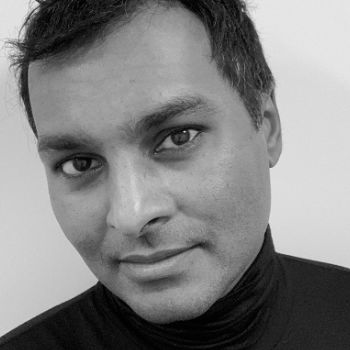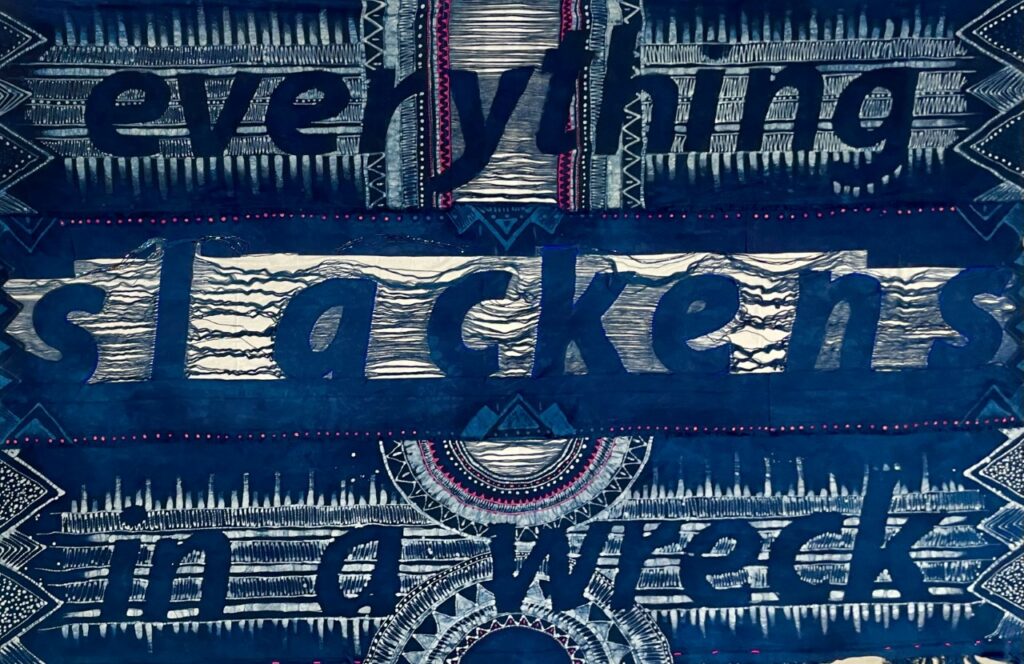
The exhibition everything slackens in a wreck, curated by Faculty of Environmental and Urban Change Professor Andil Gosine, will be at the Ford Foundation Gallery in New York City.
Running from June 1 to Aug. 20, the exhibit features seven York University community members, including exhibiting artist and BFA and MFA alumna Margaret Chen, artistry from master of environmental studies graduate and incoming PhD candidate in environmental studies Amber Williams-King, and a film edited by masters in cinema and media studies student Kathrin Mentler.
Environmental studies PhD student Aitak Sorahitalab, master of environmental studies student Kafia Abdulkader and sociology PhD student Elena Chou are featured in the exhibit’s catalogue exploring reinventive spirit in times of crisis.
The exhibiting work demonstrates a long, continuing history of survival and the particular contours of the four featured artists’ lives and their necessary choices within the various spaces they inhabit in the Americas. Chen (Jamaica/Canada), Andrea Chung (U.S.), Wendy Nanan (Trinidad/Tobago) and Kelly Sinnapah Mary (Guadeloupe) share a lineage in indentureship, and each contends with the complex legacy of this heritage over a century after their ancestors boarded ships headed from Asia to the Americas. They grieve and criticize the enduring, destructive impact of processes of colonization, but in their practices – whether giving new life to old discards or proposing new ways of looking – they also recognize migrants’ determined survivability and find opportunities amid crises.

Gosine explains that creating everything slackens in a wreck was a project that was years in the making. Invited to review an exhibit of contemporary Caribbean art at the Queens Museum in 2012, Gosine was struck by the near complete absence of the Indo-Caribbean culture in the show, despite the large community that lived at the Museum’s doorstep. Gosine later began researching artists of indentured workers alongside development of his own artistic practice, and in 2014 began the Visual Arts After Indenture project, which collects and considers visual art produced by descendants of indentured workers brought by the British to the Caribbean, Fiji and Mauritius starting in the 19th century.
In 2016, Gosine organized and led a workshop at York University to bring together artists and scholars of visual arts from all over the world who have explored indentureship in their works. He also curated the largest solo exhibition of artist Nanan’s more than four decades of work. The project drew on Gosine’s research on the interstices of environmental justice, migration and sexuality and was set to take place at the Art Museum of the Americas in Washington, D.C. before the onset of the COVID-19 pandemic. Several aspects of the exhibit were later presented online giving readers a glimpse of the artists’ work.
Last year, Gosine also taught the Cultural Production Workshop graduate course at the University and curated FRACTURE, a multimedia collection of new graduate and undergraduate students’ artworks which illustrated themes on social and environmental crisis, particularly the moments that emerge in the resulting fractures and fissures of ongoing social institutions and processes.
Works from FRACTURE included artist Williams-King and students of Gosine who are also featured in the exhibit at the Ford Foundation Gallery.
“We are living in tough times… there is a sense of perpetual crisis at varied kinds at the foreground and for me it is the environmental crisis but there is also war, the situation in Ukraine and what is broadening beyond that, a fear of living and what we are facing ahead, the pandemic… In everything slackens, I wanted to bring forward consideration of the human condition in a moment of crisis, including and our ability to find ways to experience joy or content in the worst of situations,” says Gosine. “In a wreck, everything falls apart, and that means everything, including what we might want to fall apart.”

Gosine notes although indentureship and the writing about it is mournful and encompasses violence and sadness, these moments to reflect allow artists and visitors alike to feel all kinds of human emotions and experiences which create a sense of shared human condition. Gosine explains the exhibit is about expressing shared humanity and displaying the stories of ethnicities in a personal and meaningful way.
Cross-section of labyrinth, created by Chen, is a 22-foot installation featured in the exhibit and encompasses foraged oyster shells from mangroves and plywood cast-offs from the studio that was previously a part of her family’s furniture business. Raised in a family of Chinese migrants who owned a furniture business, Chen became interested in wood as an art material when she studied with Afro-Jamaican sculptor Winston Patrick at the Jamaica School of Art and Crafts. Later, when she would return to her family’s store, Chen gathered the leftover shapes and scraps, infusing them with new life and meaning in her art.
Along with the four featured artists, everything slackens in a wreck includes various elements designed to engage and inspire visitors from the moment they enter the gallery. At the show’s entrance, Williams-King’s beaded tapestry will present the exhibition title and mark visitors’ entrance into the space.

A reading room in the gallery will offer writings on hybrid culture, Caribbean queer and feminist issues and Afro-Asian identity. The exhibition catalogue which features work from York students also includes texts by Ford Foundation president Darren Walker, gallery director Lisa Kim and Gosine.
An orchestral score carries the exhibition’s story into the Ford Foundation atrium garden. “Jahajee (Ouverture)” was produced by Gosine in collaboration with the Jahajee Sisters, whose mission is to “address, redress and dismantle gender-based violence within the city’s Indo-Caribbean community.” The collected sounds that comprise the score were the women’s responses to Gosine’s questions about what brings them joy and comfort.
“I tell my students art is a search for truth and a willingness to share vulnerability. If you do it well, people will be touched by the art you make, whether it takes the form of comfort or pleasure, introspection or disturbance.” says Gosine. “Art allows our subconsciouses to have communicate to one another.”
Learn more about the exhibit on the Ford Foundation website.
